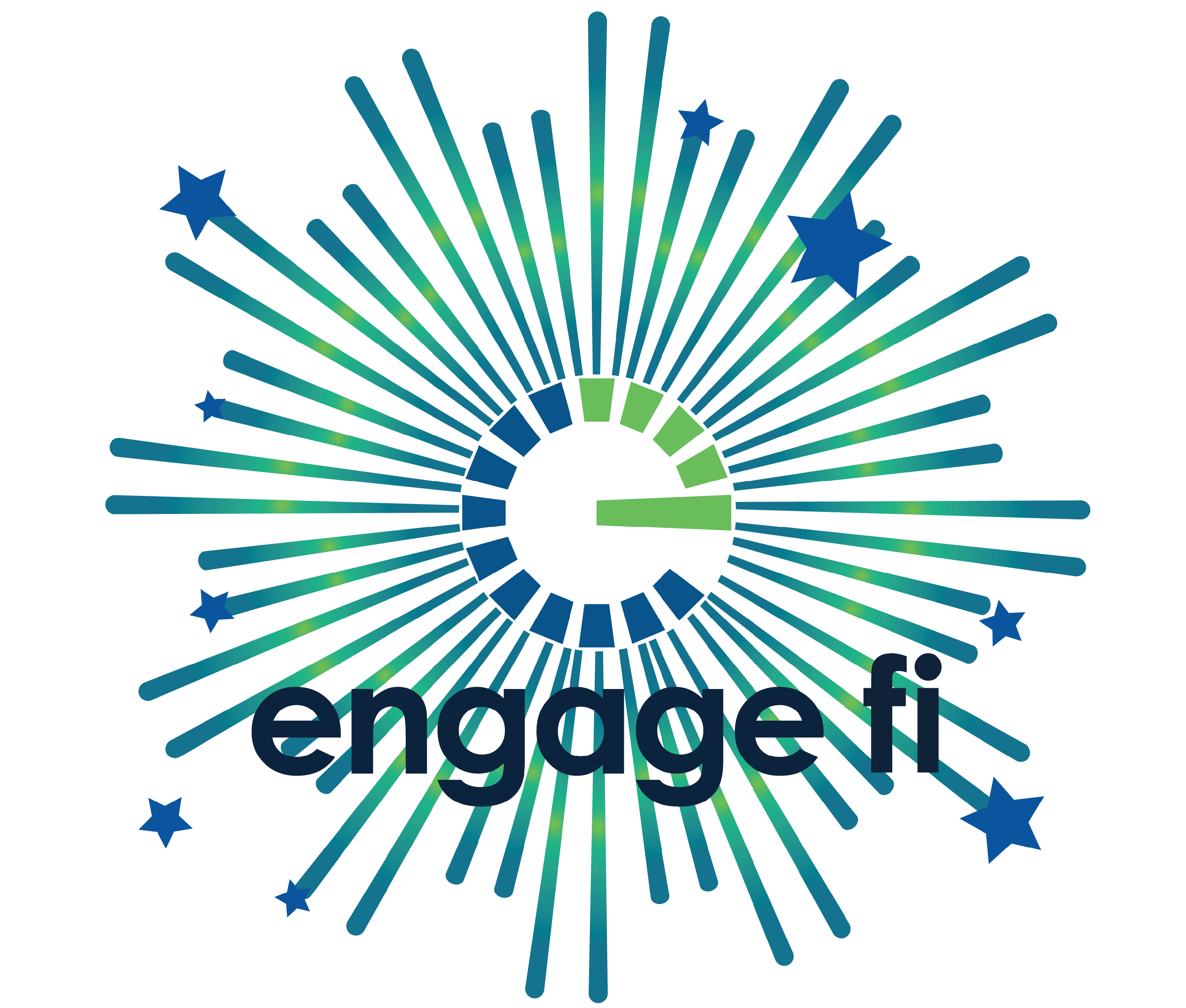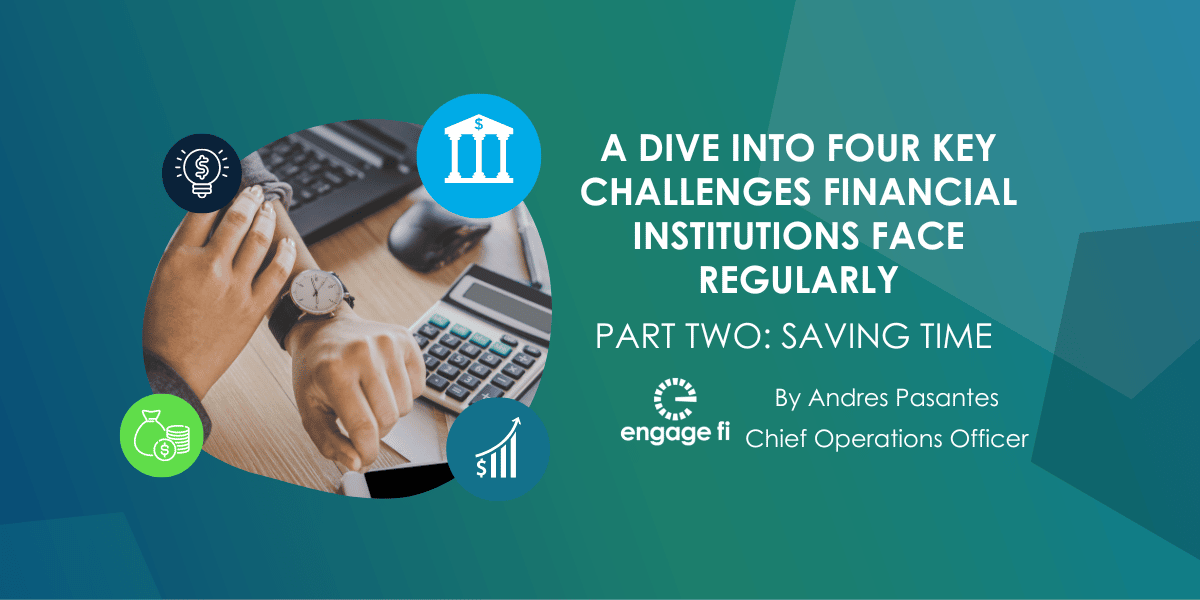A Dive Into Four Key Challenges Financial Institutions Face Regularly — Part Two: Saving Time
By Andres Pasantes
Digital solutions to grow, scale, and outperform.
Reliable, efficient, and integrated core platforms deliver results.
Navigate this high stakes process with precision.
Select modern communications channels to integrate with core and digital solutions.
Strategic Planning
Support services for the strategic planning process at every level.
M&A Planning
Realize the key value drivers resulting from your merger or acquisition.
Performance Benchmarking
Tailored metrics and benchmarks designed to assess relationships.
Organizational Efficiency
Enhance efficiency across branches, digital channels, and contact centers.
A digital library of industry news, analysis, best practices, and thought leadership tailored to the challenges and opportunities faced by financial institutions.
Our in-depth analysis of conversion strategies, M&A activity, and the evolving landscape of financial services.
At the intersection of financial technology and banking comes a podcast featuring bank and credit union professionals sharing their unscripted perspectives on the industry.
4 min read
 Marketing
:
Jan 3, 2023 4:32:05 PM
Marketing
:
Jan 3, 2023 4:32:05 PM

Virginia Heyburn
Director – Research, Insights & Advocacy
Engage fi (Formerly CU Engage)
As financial institutions move into a new technology era, they realize that their existing innovation cultures are broken. New fintech competitors are gaining market share. They are gaining deposits when traditional financial institutions are on balance losing deposits.
There’s a lot of discussion within the financial institution industry about embedded finance and embedded fintech as a technology strategy, but not enough understanding and urgency to appreciate it as a future-proof business strategy. One thing is clear, however—the need to act quickly is essential as new competitors gain ground on traditional financial institutions’ customer base.
The focus has historically been placed around the innovation of products, then products became commoditized. The shift was then to innovate around service, then service became commoditized too. Now, once again, financial institutions have to innovate around products AND service where the two are at the center of the overall strategy and no longer on the periphery.
As a result, they now face existential challenges. The consumption of banking services is increasingly unbundled from the traditional financial services industry. New niche players in mortgage, student lending, small business, and payments have long exposed the slowness of traditional financial institutions to respond to rapidly changing customer expectations – at a monumental cost to those established financial institutions.
The race for relevancy is on. Financial institutions that act quickly and are open to exploring new strategies will put themselves in a better position for long-term success. Two of the most talked about strategies are Embedded Finance and Embedded Fintech. They are distinctly different business strategies that offer financial institutions exciting possibilities to reach new market segments and offer consumers more of what they want and need – at a faster pace than ever before.
Embedded finance changes when, where, and how people interact with financial services. It has created many opportunities for financial and non-financial businesses and is something that we all know and love. Take Uber, for example. You can easily get to your destination with just a click of a button, and the added bonus is that you don’t have to pay the driver when you get to your destination. Payments are embedded behind the scenes for an easy experience.
Another example that may not be as obvious is insurance. You book your latest vacation with the airlines, and within the flight reservation options, you can add on travel insurance. Embedded finance is emerging across all consumer markets – from Instacart to Amazon, and the list goes on.
Embedded finance is more than using trendy apps for convenience. It’s also a traditional community bank partnering with a retailer or consumer service provider to be the back-end deposit account. For example, a student lending company could provide financial advice for young people. Maybe the provider would like to offer them a debit card – in this case, the provider wouldn’t need a bank charter; they could partner with a financial institution to consummate the transaction. The consumer is benefitting from the retail purchasing experience using an embedded banking service without stepping outside of their traditional buying experience to do so. It’s faster, easier, and frictionless, which is exactly what today’s consumer wants.
In this case, financial institutions capture additional opportunities with new markets that would otherwise not be obtainable. Getting into these niche markets creates an entire new segment of customers and revenue.
Embedded finance is about integrating traditional financial services into non-financial services companies’ experience. It’s meeting the consumers right where they are and providing tailored suites of products, at the point of need, with no resistance to adoption. Embedded fintech, on the other hand, offers a seamless experience for users to work within platforms they are already using. Mobile payment applications that allow peer-to-peer money transfers like Zelle, is a great example of embedded fintech that was not widely available within traditional FI experiences five years ago. Consumers can send and receive money from friends and family directly from their financial institutions. Another example is identity theft protection. Younger generations are aware of their credit and want to protect it. These consumers demand a lot from their mobile banking experience and often want to use applications that can show credit irregularities in real-time.
As with anything new, improved technologies and capabilities are often met with challenges. Anyone who has worked on implementing fintech knows it can be difficult to deploy, as many financial institutions are still operating on legacy technology. Historically, especially in smaller institutions, IT has been outsourced to technology providers that specialize in digital experiences.
Financial institutions need to evolve and become innovators. Neither has been easy in past years. A core system conversion can be difficult, but it may be necessary to move your digital experience forward. To future-ready your financial institution, the ability to transform and implement new technology features is critical. It’s time for rapid product innovation, and digital strategies need to be managed from within the financial institution, with decisions based on strategy, not on current available technology. It will require a rethink in terms of how much technology control you give to your primary technology partners and how to bring differentiating skills in-house.
With the recent improvements in technology as an enabler, financial institutions can expand their appeal to a whole new generation of consumers and business owners who are digital native. Whether you choose embedded finance or embedded fintech, take action now. Loyalty is increasingly built on the foundation of technology, and financial institutions must provide an exceptional experience before consumers and businesses choose other brands.
Over a 25-year career, Virginia Heyburn has been at the forefront of advising technology companies on innovation opportunities to solve complex banking problems and to improve the customer experience. In parallel, Virginia has served as a strategic advisor to financial institutions, helping them create essential distinction through rapid adaption to industry and consumer trends, business drivers, and technology change.
To schedule a time to speak with Virginia or one of our other consultants about your financial institution’s strategies for future readiness, please call us at (844) 415-7962 or click here to book a call online.

By Andres Pasantes
What was deemed a novelty a short time ago has morphed into a significant innovation in the financial industry—and it is here to stay. As reported in

Bill Pay Keeps Your Credit Union Top of Wallet and Top of Mind with Millennial and Gen Z Consumers Making up 55% of the U.S. population, millennial...